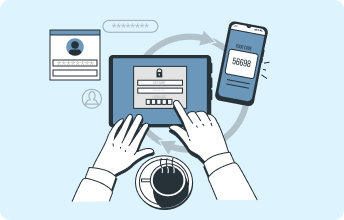How to Securely Use Smart Home Devices
- Kate

- Mar 18
- 2 min read
Smart home devices offer convenience, automation, and enhanced security. However, they also introduce cybersecurity risks. The more connected devices you have, the greater the potential for cyber threats. Cybercriminals can exploit security vulnerabilities to access your network and sensitive data. Follow these best practices to secure your smart home and protect your personal information.
Best Practices for Securing Smart Home Devices
Step 1: Choose Secure device
Before purchasing a smart device, research the product and manufacturer to ensure it has strong security features, regular software updates, and positive user reviews. Additionally, check the device’s minimum requirements, such as a stable internet connection, a smartphone or tablet, and the need to install an app or create an online account for device management.

Step 2: Secure your Wi-Fi network
Most routers come with default settings that are easy for hackers to exploit. Strengthen your home network security by:
Changing the default router username and password
Using a strong, unique password for your Wi-Fi network
Enabling WPA3 or WPA2 encryption for enhanced protection
Creating a separate guest network for smart devices to prevent breaches affecting your primary devices

Step 3: Use Strong and Unique Passwords
Secure your smart home ecosystem with robust authentication methods:
Change Default Credentials: Replace default usernames and passwords with strong, unique ones.
Use a Password Manager: Generate and securely store complex passwords.
Enable Two-Factor Authentication (2FA): Add an extra layer of security where available.

Step 4: Install comprehensive security software.
Enhance your network security by:
Using a firewall and antivirus software to detect and block threats with trusted security solutions like Malwarebytes.
Enabling network monitoring to identify unusual activity
Considering a secure DNS service for extra protection
Implementing a smart security solution that safeguards connected devices through your router, preventing unauthorized access and cyber threats

Step 5: Disable Unnecessary Features
Many smart devices come with features that may not be essential for daily use. To minimize security risks:
Turn Off Remote Access: Unless required, disable remote access to prevent unauthorized control.
Review Device Permissions: Restrict data-sharing settings to only what’s necessary.

Step 6: Keep the device Updated
Regular software updates help fix security vulnerabilities and improve device performance. To ensure your smart devices remain secure:
Enable automatic updates when available.
Manually install updates as soon as they’re released.
Check the manufacturer’s website for firmware updates and security patches.

Step 7: Plan for Device Disposal
When it’s time to replace, sell, or give away a smart device, follow these steps to prevent unauthorized access to your data:
Perform a factory reset to erase all personal data and restore default settings.
Remove the device from linked apps or accounts to ensure it’s no longer associated with you.
Check the manufacturer’s website for specific reset instructions.
Refer to the NCSC’s guidance on securely buying and selling second-hand devices.












